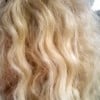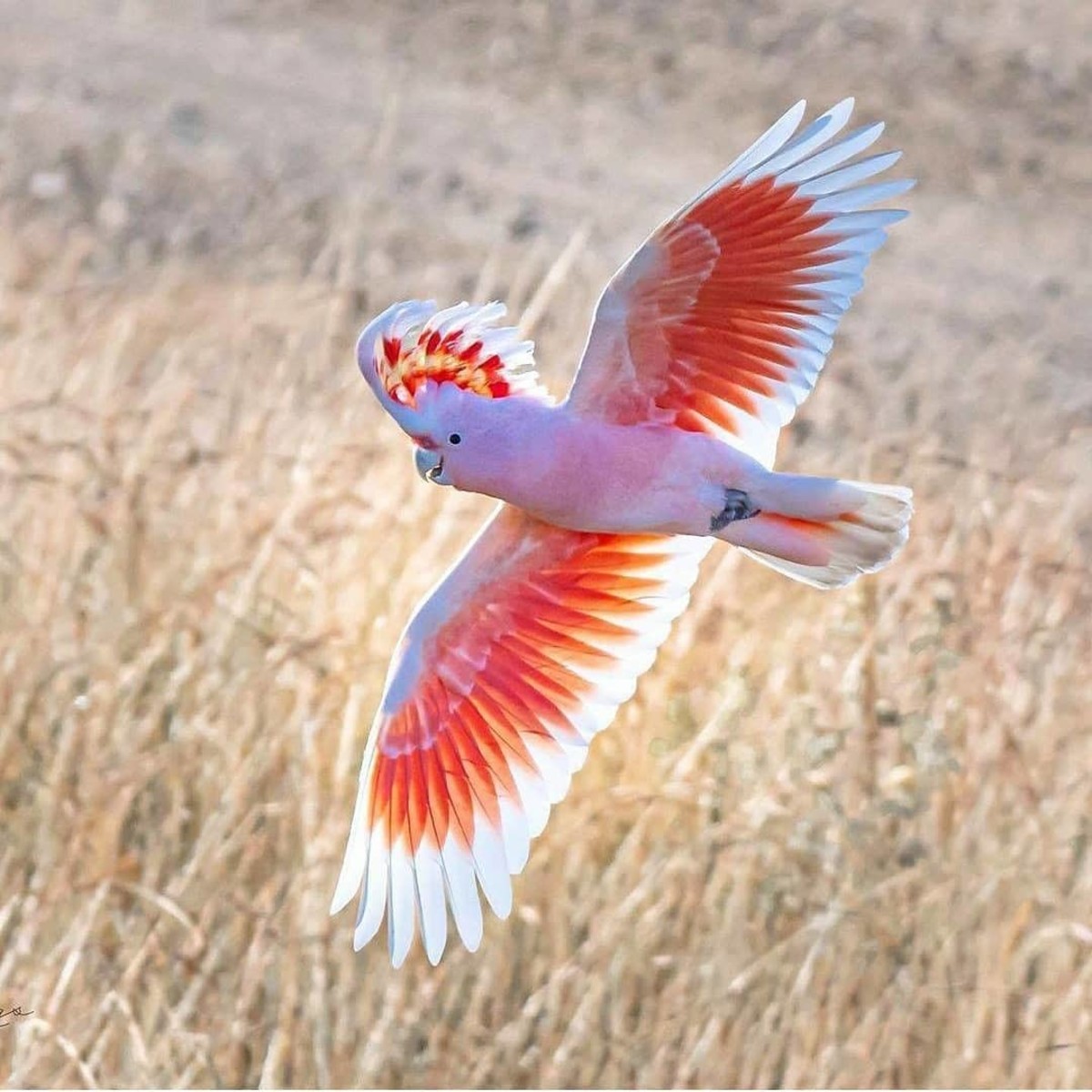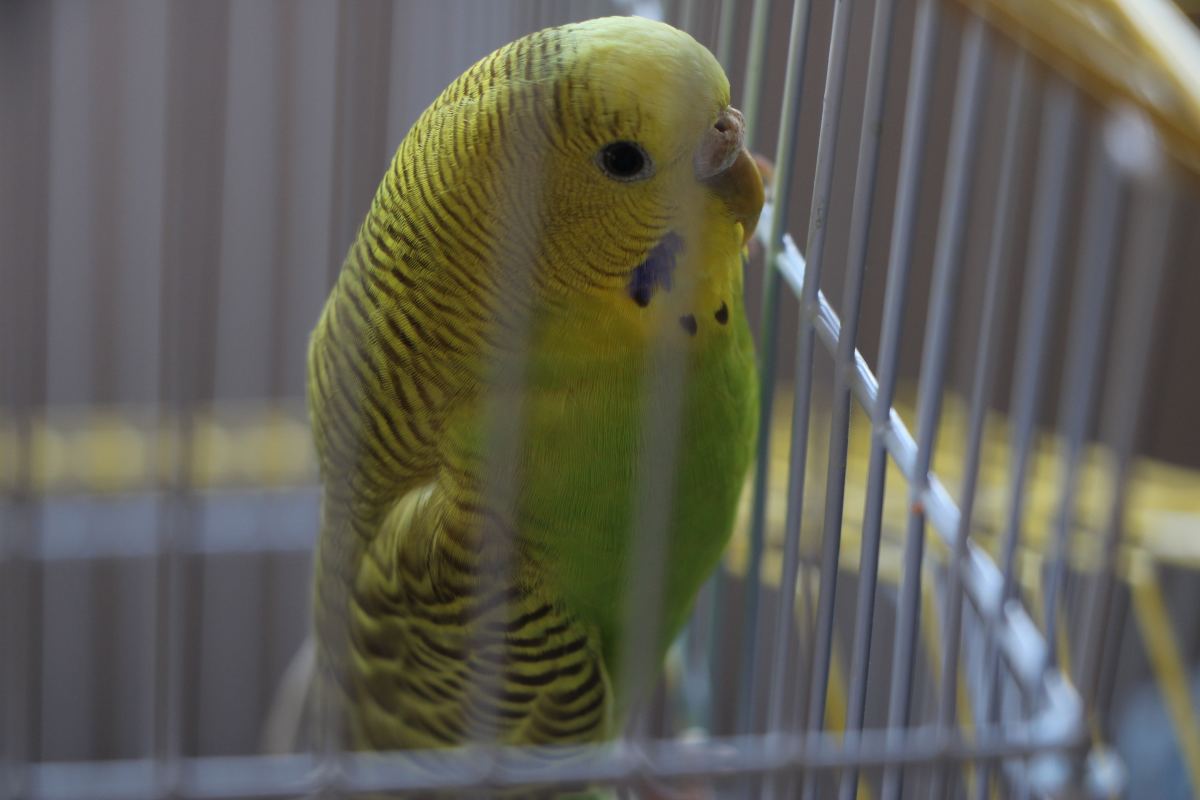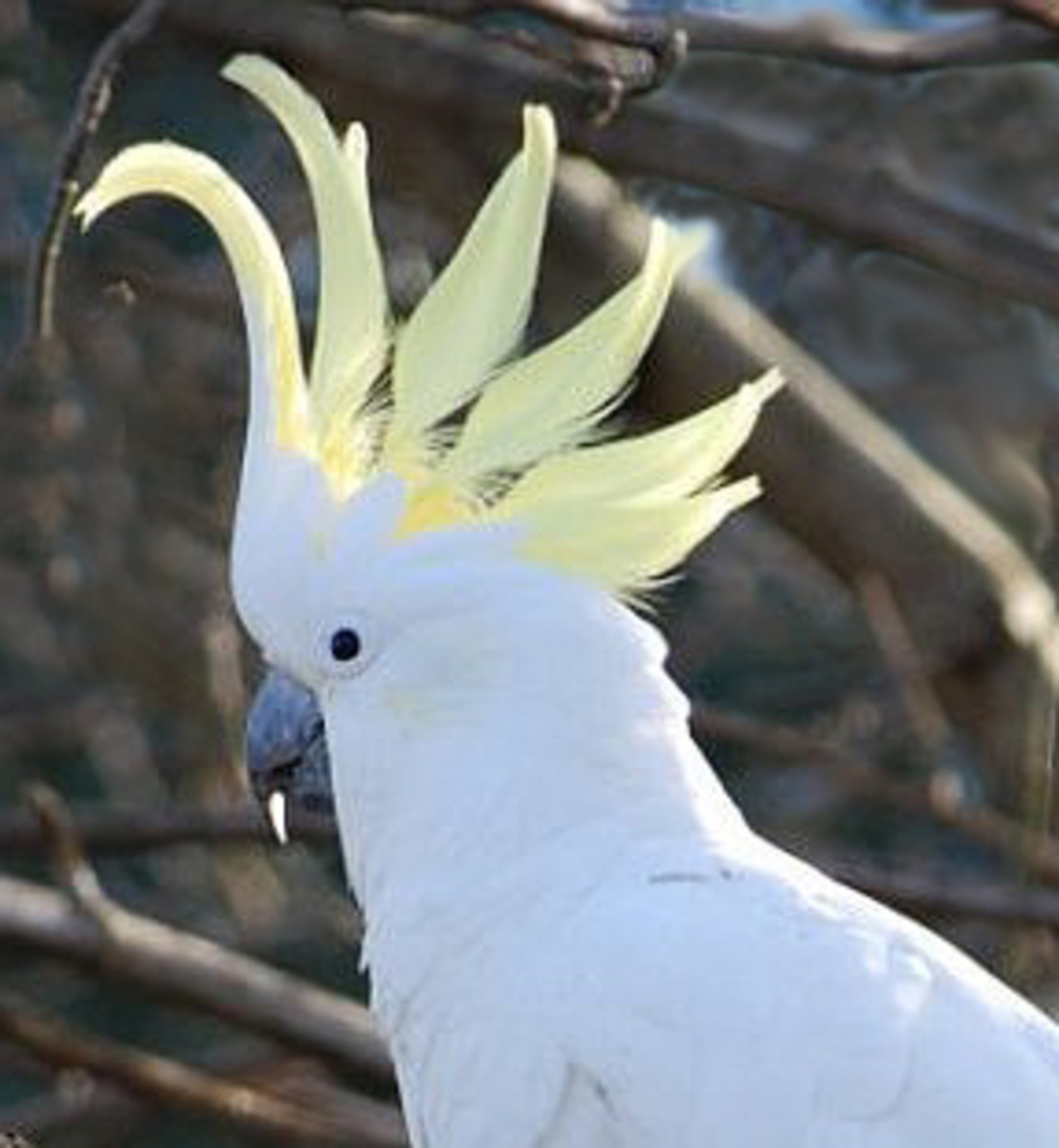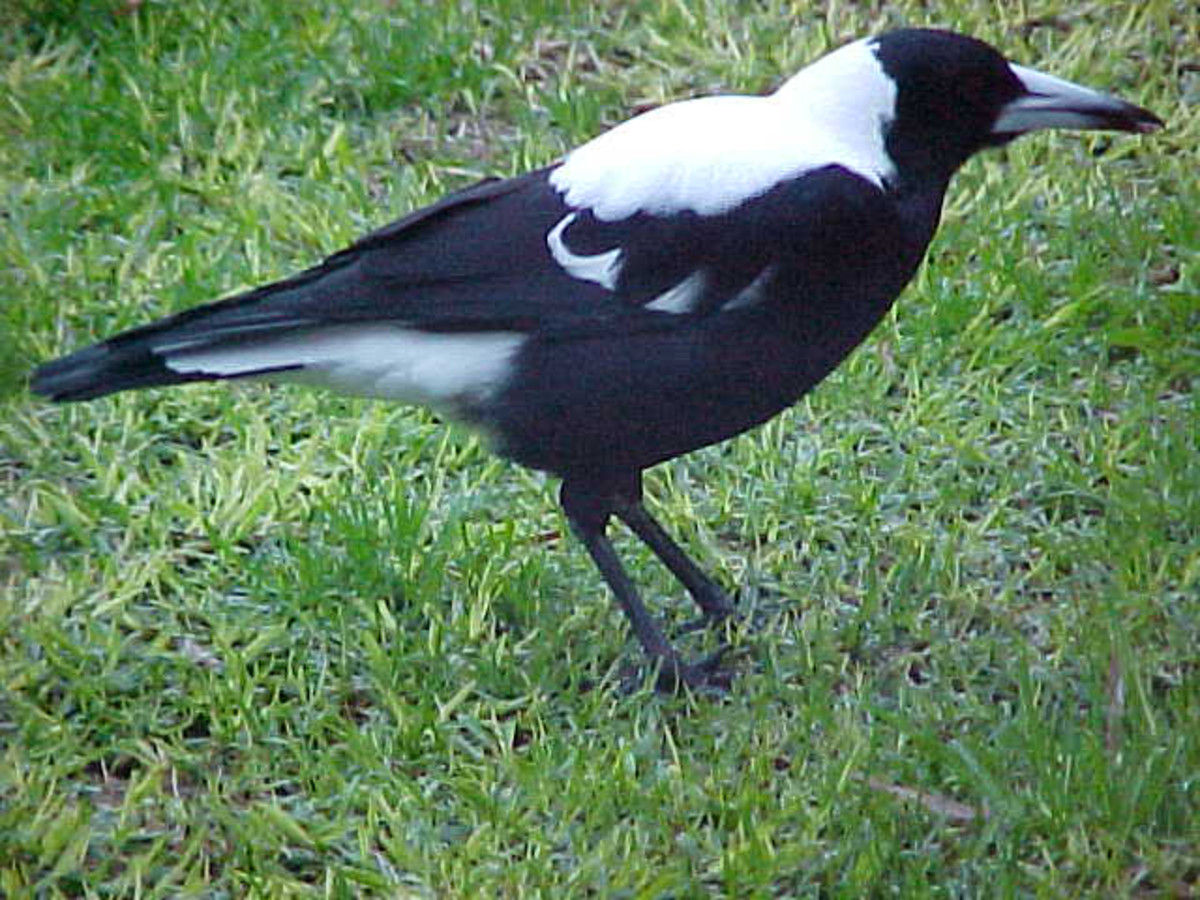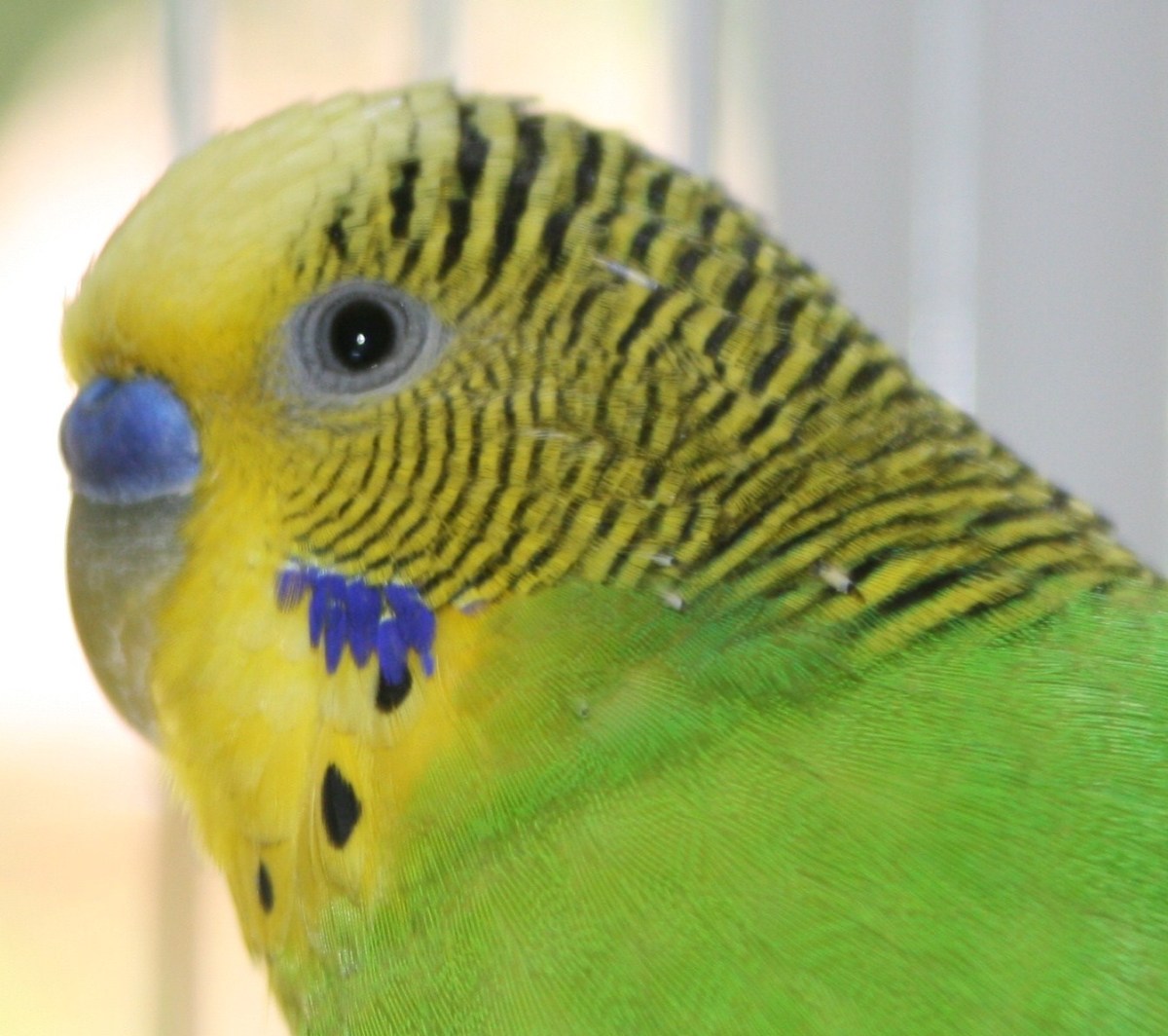GALAHS - Red-Breasted Cockatoos
Pet Galah Red-breasted Cockatoo
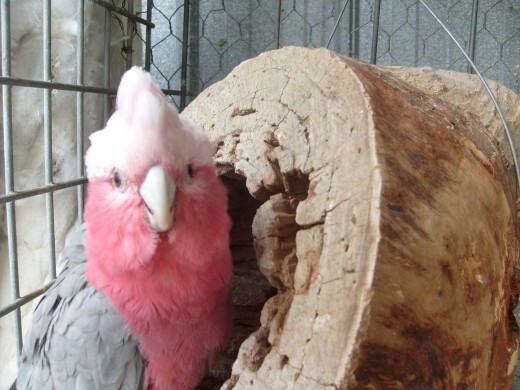
Other Common Names: Rose-breasted Cockatoo and the Rose Cockatoo
Galahs are gorgeous, gregarious birds native to Australia and the South Pacific Islands. Galahs are found across the entire continent of Australia, other than in arid regions. Galahs live in large flocks in timbered habitats that have an ample water source.
Galahs (or Red-breasted Cockatoos) have a rosy-pink head with a lighter pink crest. The deeper pink is also seen on the neck, underparts and under-tail. They have a grey back and wings, with a whitish edge. Soft light pink feathers also grace the tip of the tail. Galahs have pearlish-white, hooked beaks.
The Galah can be considered a medium sized bird with its’ body length being approximately 35 cm (14 inches) and with a weight of between 300 – 400 grams (0.7 – 0.8 pounds).
Male Galahs have a wingspan of 26 to 28 cms (14 inches) and females 25 – 28 cms (9.8 – 11 inches).
The average lifespan of a Galah is between 50 and 80 years, so this must be taken into consideration if/when looking to purchase one as a pet.
Galahs are intelligent, acrobatic, affection and entertaining birds and seem to have all the intrinsic qualities that make them ideal family pets. Galahs enjoy human contact and love to spend time playing with their owners. Galahs form very strong bonds with their owners and enjoy physical contact such as scratching under the wings, just behind their crests and under their beaks.
Galahs thrive on attention but also enjoy keeping themselves amused with toys and puzzles. Galahs are easy to train, needing only time, patience and love in order to achieve amazing feats. They can be trained to mimic human speech and whistling amongst other sounds and noises. Galahs can be trained to ‘talk’, picking up words and whole phrases. Male Galahs seem to learn to mimic a little sooner, a little easier and a little more fluently than their female counterparts.
Galahs often take favourably to all members of the family making them ideal to have around the house. Keep in mind though that these quirky birds get bored easily so must be kept entertained. Supply your Galah with ample, colourful toys made of wood and robust, non-toxic materials in order to keep their busy minds entertained.
Galahs emit a high pitched screech in the wild, communicating from bird to bird. They are very socially active birds and can become a screeching mob when a flock flies overhead or lands. When kept as pets Galahs tend to be much quieter, possibly only screeching at dawn and dusk, and in response to hearing other birds singing outside (or inside ie. another pet bird)
In the wild Galahs fly in huge flocks and are very vocal, shrieking and calling out while performing aerial feats. They swerve and swoop, duck and spiral, matching their quirky, cheeky personalities. Being a flock bird, Galahs crave and need company.
Australians use the term ‘Galah’ as slang to call someone a fool, clown or a joker. These birds reflect that description perfectly as they are energetic, active, precocious and raucous in personality.
Galahs are quirky, curious birds ...
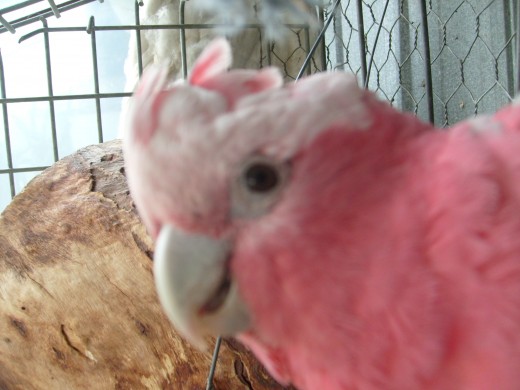
What to feed Galahs (Red-breasted Cockatoos)
FOOD FOR GALAHS
In the wild, Galahs feed mostly on the ground and their diet would include seeds of grasses and cultivated crops. In some areas of Australia, Galahs are considered an agricultural pest. They’ve been known to travel great distances to find palatable food sources.
An ideal diet for your pet Galah includes a mix of:
*Green shoots *leaf buds *roots *insects and their larvae *wheat *hulled oats *striped sunflower seeds *millet *sprouted seeds *cooked brown rice *grains *rice *wheat * pasta *green peas *broccoli *spinach *celery *zucchini *tomatoes *cucumbers *cabbage *cooked white potato *red and green capsicum *cauliflower *cooked sweet potato *cooked yams *butternut and acorn squash *carrots *pumpkin *dandelion greens *mustard greens *beet greens *small amounts of corn *passionfruit *berries *oranges *apples *cherries *cantaloupe *strawberries *peaches *nectarines *apricots *pears *bananas *plums *mango *figs *pomegranates *kiwi fruit
Foods to Avoid
*Iceberg lettuce *caffeine *avocado *parley *black sunflower seeds
Keep fresh water plentiful.
Galahs are known to over-eat, particularly if bored, so keep a check on their weight.
Supplements
Vitamin and mineral supplements can be added to the Galah’s feed and/or water, particularly if the Galah’s diet consists predominantly of seed only.
Provide your pet Galah with a cuttlebone/cuttlefish and/or mineral block as this keeps the Galah’s beak trimmed to prevent beak over-growth, and at the same time provides the bird with calcium.
Housing Your Galah - Red-breasted cockatoo cage
Housing
Galahs feel most comfortable in well kept and maintained enclosures. When keeping a Galah as a pet ensure that its’ cage is adequate for optimum well-being. It needs to be practical and comfortable and as large as you can possibly make it. Make sure there is enough room to house toys, perches, water and feed containers. Galahs love to move around and spread their wings. Ensure the cage is light and airy and kept clean with litter removed daily.
Place feed and water containers away from areas where the bird is likely to do its’ droppings (ie. under perches) and change water regularly; twice a day being ideal.
Keep fresh foods such as green vegetables and fruit separate from dry foods such as seeds and grains.
Galahs are very social birds and are able to be housed with other parrots.
Galahs are comfortable at the same temperature that humans are, although they do not adapt to temperature fluctuations as well as we do. In captivity, try to keep the temperature at around 27 to 32 C (80 – 90 F).
Galahs enjoy their freedom and like to spend stretches of time out of their cages.
Toys
If a Galah becomes bored it will start pulling out and mutilating their feathers. Therefore a variety of toys needs to be introduced into the Galah’s cage.
Toys for the Galah are best robust and strong as their smallish beaks are very powerful and sharp.
Colourful hanging and foot toys and knotted ropes are ideal. Rotate different toys to keep the Galah inquisitive and entertained.
Galahs love to swing and hang upside down, so if room allows, place a swing in the Galah’s cage.
With enough toys in their cage to keep them amused, Galahs are happy to spend time alone. They are quite independent birds and generally have a happy disposition.
A cuttlefish and/or mineral block should be placed in the cage in order for the Galah to receive calcium as well as keeps their beaks trimmed.
Perches
Perches not only give your birds exercise, but allow birds to easily move around. Ensure that there are at least two perches at different heights. Make sure that perches are placed in such a way that droppings and the bird’s feathers and tail do not fall into or come into contact with their drinking and bathwater containers.
Bathing
Allowing a Galah to bathe is essential. Birds living in the wild live with weather conditions such as rain, which facilitates the natural bathing of feathers.
Birds kept indoors are exposed to artificial conditions and the atmosphere inside is generally drier compared to outside. Regular bathing ensure that feathers are kept clean.
Breeding Galahs
Breeding
The sex of a Galah is only distinguishable by the colour of their eyes. Males and young females have a very dark blackish-brown iris, and the adult female copperish-red. Males have thicker eye-rings and generally both the pink and grey are darker than that of the female.
The average age of maturity for Galahs is between 3 and 4 years of age. Galah’s mate for life and have one partner for the entirety of their lifetime. Galahs in the wild bond strongly with their partner and can often be seen preening one another while roosting and resting in trees. When they fly together it is a magical sight.
In the wild, Galahs line their nests with fresh Blue Gum twigs and leaves that they shred with their beaks. If no Blue Gum branches are available, Galahs will line their nests with corncob cores, feathers, small bits of wood and seed husks.
Galahs build their nests in the hollows of trees and line them with soft leaves. Galahs then lay up to four white, oval eggs in a clutch and incubation lasts for 19 days, with the first two eggs laid hatching first. The third and fourth eggs hatch at intervals of two days. Both parents incubate the eggs and take care of the hatchlings and handle the chicks very carefully. (Unfortunately though, there is a high mortality rate amongst Galah chicks. Many fall out of their nests during high winds and storms.)
Once the chicks hatch they are covered in light pink down feathers. The chicks grow very quickly, particularly after the first week.
Taking Care of Galahs
Physical Signs of Illness
The instinct of birds in the wild is to act more healthy than what they really are in order to avoid the attention of predators to itself and its’ fellow flock members. Birds also try to mask their illness from the rest of the flock to avoid their disapproval and displeasure.
Because of this inborn behaviour and natural instinct, even a lone, caged pet bird can be very ill before it becomes obvious that something is seriously wrong with it.
If a Galah (and birds in general) is ill they become motionless in order to conserve their energy and body temperature. If your Galah becomes inactive, quiet and listless, ensure that it is kept warm.
The most common indications of an illness in birds are:
*The absence of preening and vocalization
*Water droppings and/or an obvious change in the colour of the droppings. A healthy bird will have dark green droppings mixed with white matter.
*Fluffed up or haphazard plumage
*A sudden change in physical appearance
*General dullness and a lack of activity and energy
*Resting of the floor of the cage or on the ground
*Laboured breathing
*A loss of appetite and excessive or sudden weight loss.
*Discharge from the mouth, eyes and/or nose
*A crooked beak and/or crooked toes and toenails are indications that the bird has been ill for an extended time and urgently needs the attention from a specialist avian vet.
If any symptoms of illness are present, take the bird to an avian vet for diagnosis and treatment.
First Aid For Galahs
A great antiseptic to keep on hand for Galahs is Hydrogen Peroxide. It can be used safely and effectively on all types of cuts and scratches, and on bleeding wounds. Betadyne and Iodine are other excellent antiseptics.
Ensure that you avoid antiseptic creams of all kinds. Creams clog and cake the feathers which cause the bird to lose body heat, and may also cause harm if ingested by the bird.
*
With proper care, love and patience, Galahs make wonderful long-term companion pets, particularly when they are hand-raised.
The friendly Galah enjoys being handled and is an ongoing source of amusement, entertainment, love and friendship. Galahs make affectionate and entertaining pets and are relatively easy to care for.
**
Do NOT consider keeping a Galah as a pet if you do not have the time to put into their care and upkeep. Galahs need a lot of attention from their owners, and if feeling bored and lonely, they may resort to feather-plucking or pulling, and self-harm. They can also become quite destructive of their environment if not kept entertained.
All About Sulphur Crested Cockatoos
- Cockatoos - All about Sulphur Crested Cockatoos
Cocky, White Cockatoo, Great Sulphur Crested Cockatoo. Sulphur Crested Cockatoos are an Australian native bird which can readily be seen throughout Australia, sometimes in huge flocks...
